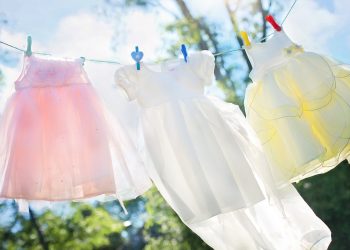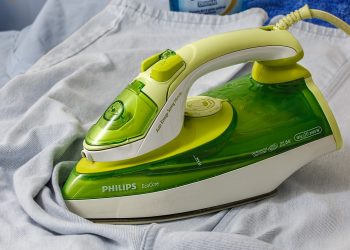As the world becomes more aware of the environmental and ethical challenges facing the fashion industry, sustainable fashion is emerging as a powerful movement. It’s about making choices that reduce harm to the planet, promote fair labor practices, and support long-term environmental health. Here’s an in-depth guide to understanding sustainable fashion and how to incorporate it into your lifestyle.
Understanding Sustainable Fashion
Sustainable fashion encompasses a wide range of practices aimed at creating a more ethical and environmentally friendly industry:
- Eco-Friendly Materials: Utilizing natural, organic, or recycled fabrics that minimize environmental impact, such as organic cotton, hemp, or recycled polyester.
- Ethical Labor Practices: Ensuring workers are paid fair wages and work in safe conditions.
- Reduced Waste: Encouraging brands and consumers to minimize waste through recycling, upcycling, and thoughtful consumption.
By supporting sustainable fashion, you contribute to a system that values quality, responsibility, and longevity over fast, disposable trends.
The Environmental Impact of Fast Fashion
Fast fashion is known for its quick production cycles and low-cost garments, but it comes at a high environmental cost:
- Waste Production: Millions of tons of clothing are discarded annually, with many items ending up in landfills.
- Water Usage: Producing a single cotton shirt can require over 2,700 liters of water.
- Carbon Emissions: The fashion industry is responsible for up to 10% of global carbon emissions.
Understanding these impacts highlights the need for more conscious consumer behavior and sustainable practices.
Choosing Sustainable Fabrics
Fabrics play a critical role in sustainable fashion. Here are some eco-friendly options to consider:
- Organic Cotton: Grown without harmful pesticides, reducing environmental pollution.
- Hemp: A fast-growing plant that requires minimal water and pesticides.
- Recycled Polyester: Made from recycled plastic bottles, reducing waste.
- Tencel: Produced from sustainably sourced wood pulp, it’s biodegradable and soft.
- Linen: Made from flax plants, it’s durable and environmentally friendly.
Opting for these materials supports a more sustainable production cycle while ensuring high-quality garments.
Embracing Slow Fashion
Slow fashion emphasizes quality over quantity, encouraging thoughtful purchasing decisions:
- Buy Less, Choose Well: Focus on timeless, versatile pieces that can be styled in multiple ways.
- Invest in Quality: High-quality garments last longer, reducing the need for frequent replacements.
- Repair and Maintain: Extend the life of your clothing by mending, tailoring, and properly caring for your items.
Slow fashion prioritizes long-term value over short-lived trends.
Supporting Ethical Brands
When shopping, prioritize brands that align with sustainable values:
- Transparent Practices: Look for companies that share detailed information about their supply chain and labor conditions.
- Certifications: Seek out certifications like Fair Trade, Global Organic Textile Standard (GOTS), or OEKO-TEX.
- Local Businesses: Supporting local designers reduces the environmental impact of transportation and fosters community growth.
Researching brands before making a purchase ensures your money supports ethical practices.
Upcycling and DIY Fashion
Upcycling and DIY projects are creative ways to embrace sustainability:
- Repurpose Old Clothes: Transform outdated garments into new, fashionable pieces.
- DIY Accessories: Create unique jewelry, bags, or scarves from fabric scraps.
- Thrift Shopping: Find pre-loved items that add character to your wardrobe while reducing waste.
These practices encourage creativity and reduce reliance on new resources.
Capsule Wardrobes
A capsule wardrobe is a collection of essential, versatile items that can be mixed and matched:
- How to Build One:
- Start with basics like neutral tops, trousers, and outerwear.
- Add seasonal pieces like lightweight dresses for summer or knitwear for winter.
- Incorporate statement accessories to enhance your look.
- Benefits:
- Reduces decision fatigue.
- Encourages mindful consumption.
- Saves money over time.
A capsule wardrobe simplifies your life while promoting sustainability.
Caring for Your Clothes
Proper maintenance extends the lifespan of your garments, reducing the need for replacements:
- Wash Less: Frequent washing can wear out fabrics; spot clean or air out garments when possible.
- Use Eco-Friendly Detergents: Choose biodegradable, plant-based detergents to minimize water pollution.
- Wash Cold: Save energy by using cold water and line drying instead of tumble drying.
- Store Properly: Protect your clothes from moths and mildew by storing them in a cool, dry place.
Caring for your clothes ensures they stay in great condition for years to come.
The Role of Technology in Sustainable Fashion
Innovative technologies are driving sustainable practices in the fashion industry:
- 3D Knitting: Reduces fabric waste by creating garments with minimal leftovers.
- Digital Fashion: Virtual clothing and fashion apps help reduce the demand for physical garments.
- Blockchain: Enhances supply chain transparency, ensuring ethical practices are followed.
Embracing these advancements supports the growth of sustainable fashion.
Educating Yourself and Others
Awareness is key to making informed decisions:
- Documentaries and Books: Watch films like The True Cost or read books like Fashionopolis to understand the industry’s impact.
- Social Media: Follow influencers and brands that promote sustainable practices.
- Conversations: Share your knowledge with friends and family to inspire change.
Education empowers you to make a difference in your fashion choices.
By embracing sustainable fashion, you can make choices that benefit both the planet and its people. From selecting eco-friendly fabrics to supporting ethical brands, every step contributes to a more responsible and stylish future.








